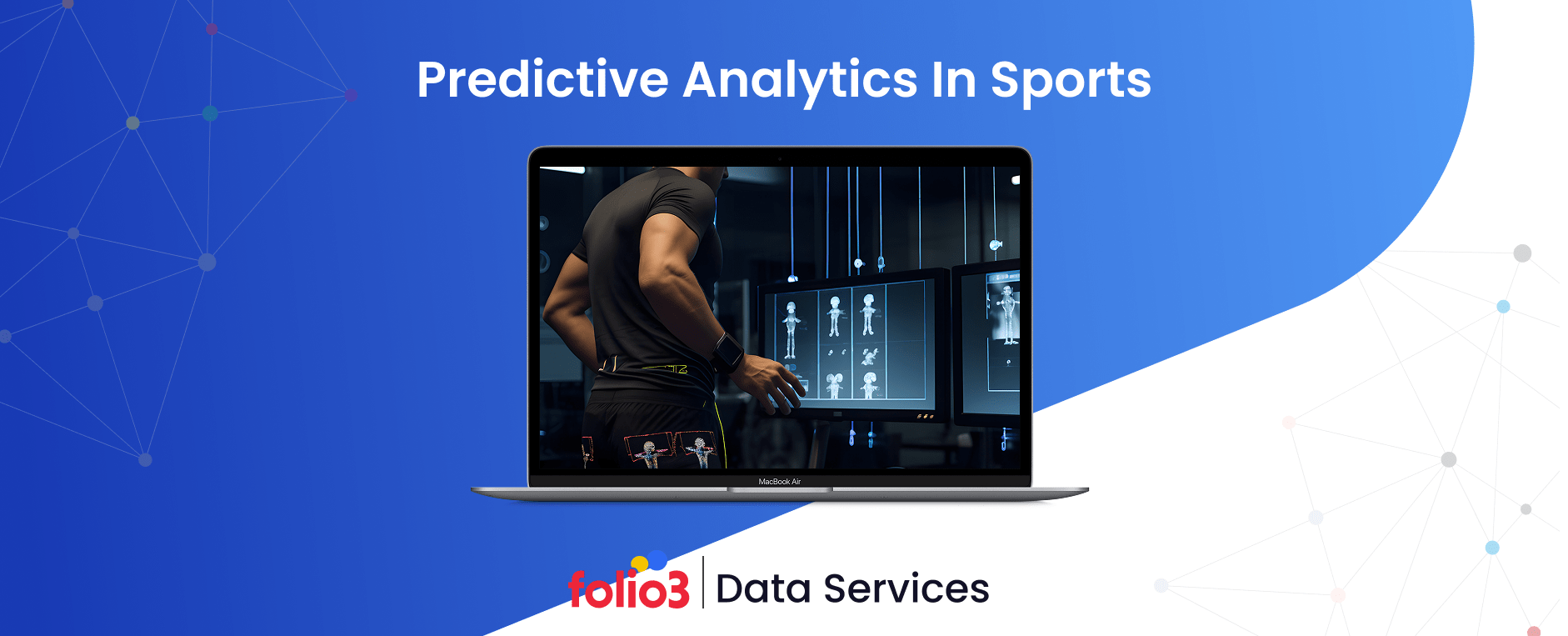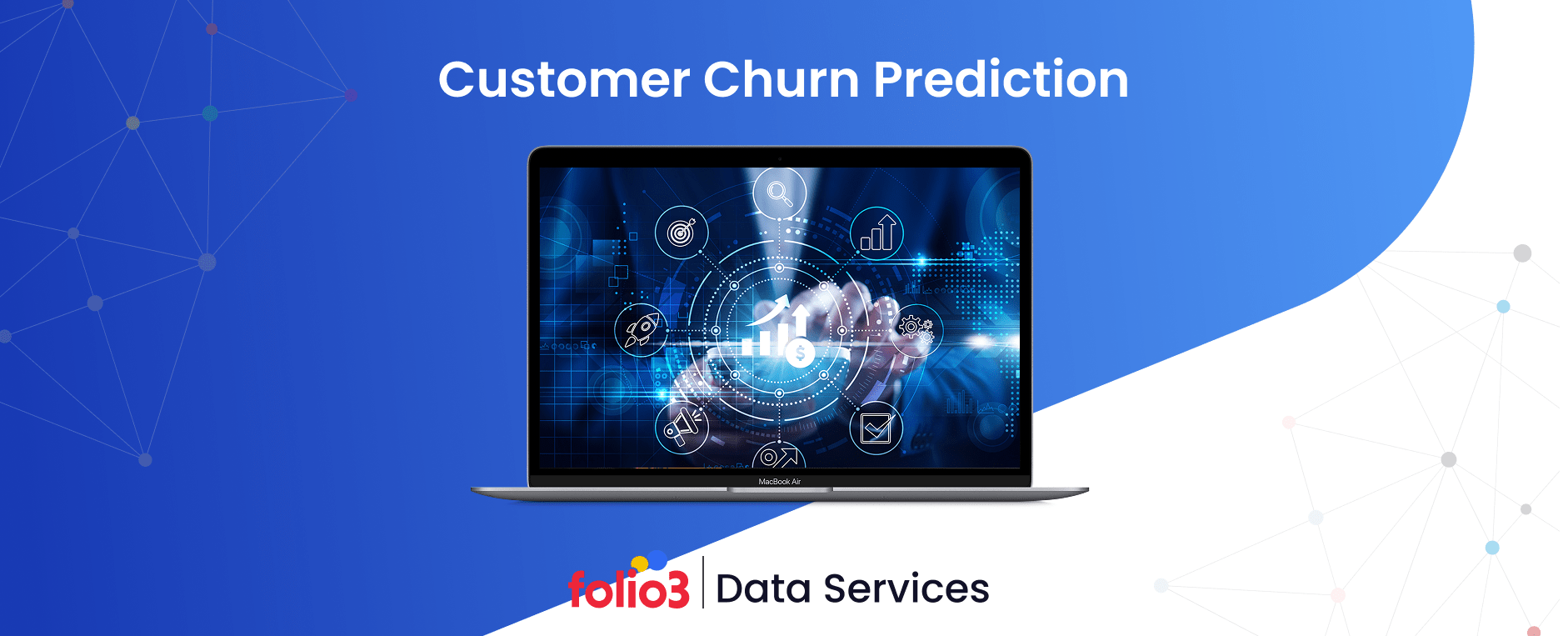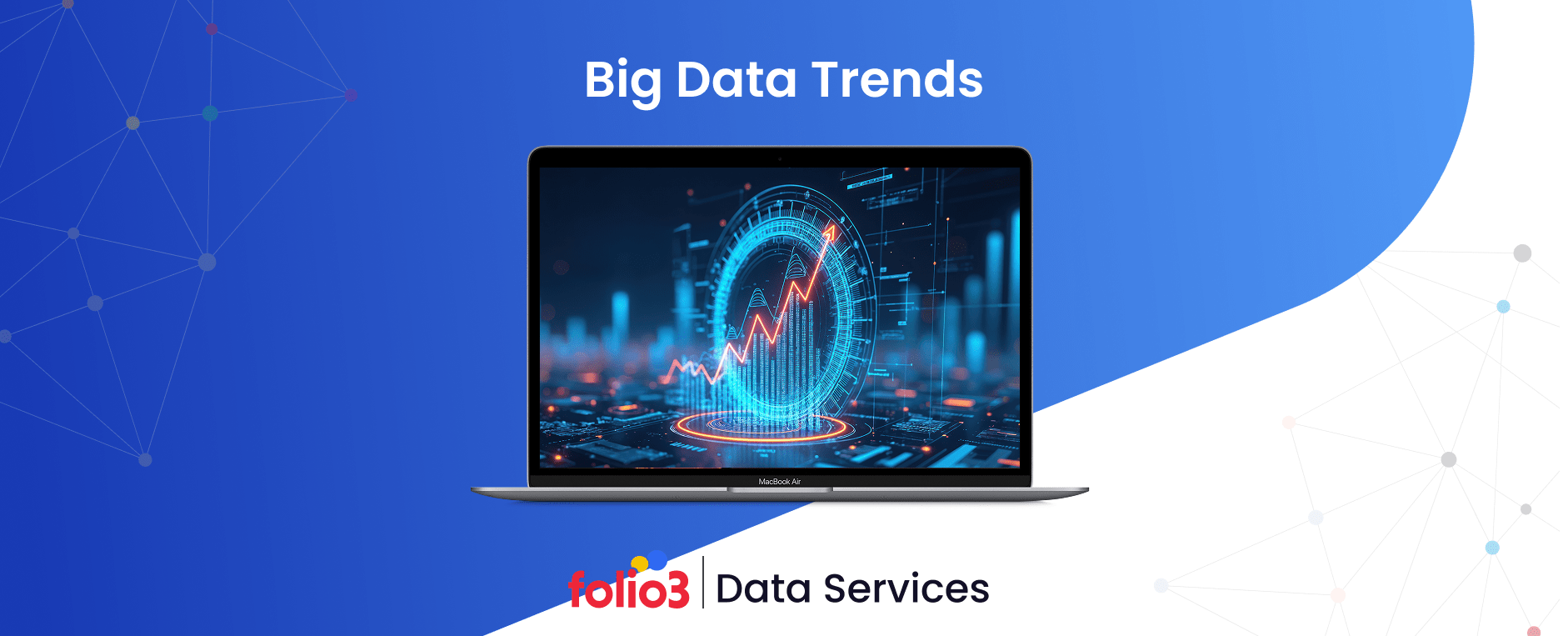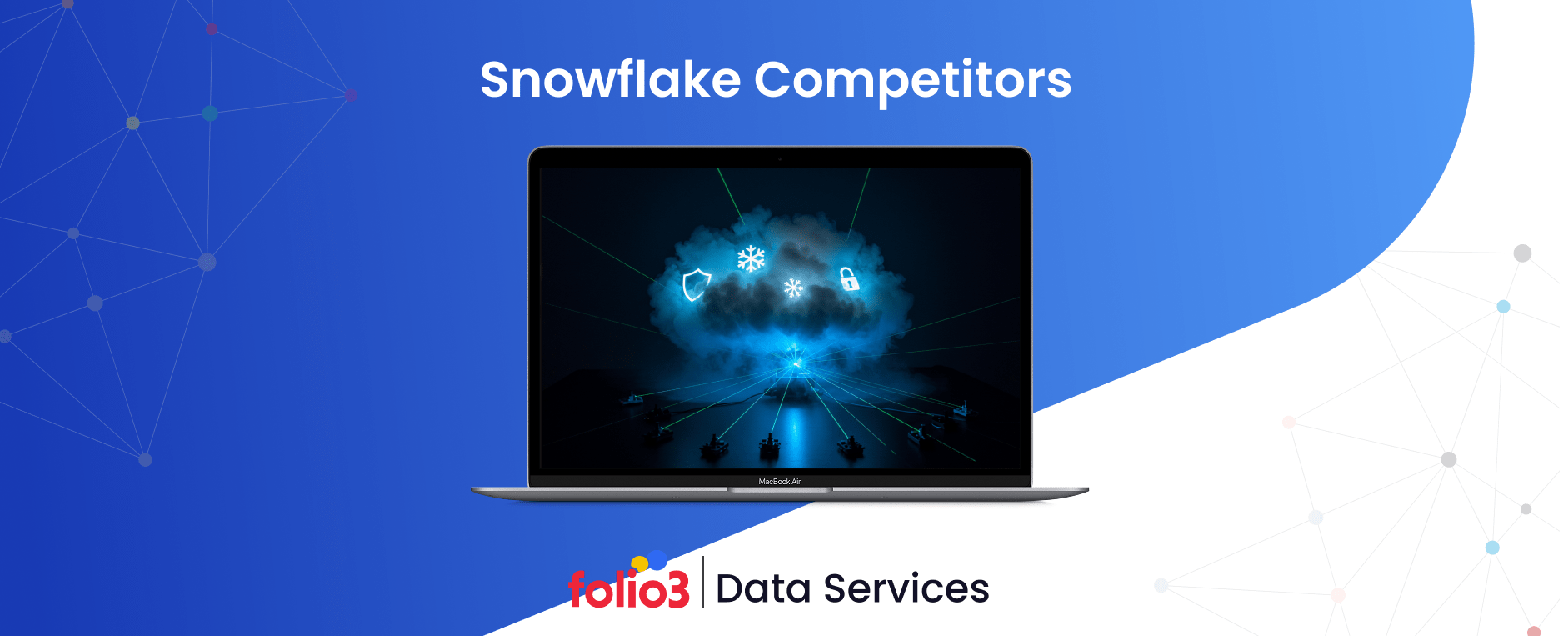Sports have always been about skill, passion, and strategy. But in today’s world, the real game-changer is data. Winning teams are no longer relying solely on instinct or experience. They’re using predictive analytics in sports to anticipate outcomes, prevent injuries, and make faster, smarter decisions both on and off the field.
Predictive analytics combines historical data, machine learning, and advanced statistical models to forecast future events. While this approach has long been used in business to forecast trends or customer behavior, predictive modeling in sports analytics brings an entirely new level of precision to performance management and tactical planning.
From optimizing training loads to refining game strategies and scouting talent, every data point collected through sensors, video systems, or wearables has the potential to influence success. Unlike static business models, sports environments are dynamic and unpredictable.
Factors such as player fatigue, opponent behavior, weather, and even crowd influence make prediction incredibly complex. Yet, with the rise of sports predictive analytics, teams can simulate scenarios, refine lineups, and enhance fan experiences through data-driven insights.
This guide explores how predictive analytics is transforming modern sports from performance optimization and strategy development to business growth and fan engagement, and helping teams stay ahead of the competition.
What is Predictive Analytics in Sports?
At its core, predictive analytics in sports is about transforming raw data into foresight. It leverages information from past games, player biometrics, opponent behavior, and external variables such as weather and travel conditions to forecast what’s likely to happen next. Unlike descriptive analytics, which only explains what has already occurred, predictive analytics focuses on answering forward-looking questions such as:
- Is this player at risk of injury in the coming weeks?
- Which lineup gives us the highest win probability against a particular opponent?
- How will adjusting ticket prices based on weather impact sales?
In sports analytics, teams combine three essential components: comprehensive data collection, advanced statistical algorithms, and expert insights from coaches and performance staff. The field has evolved rapidly with modern data technologies.
Player tracking systems now record movement patterns dozens of times per second, while wearables monitor heart rate variability, recovery, and fatigue levels. Video analytics platforms capture every pass, shot, and defensive move to reveal tactical trends invisible to the human eye.
The real value of sports predictive analytics lies not in the complexity of the algorithms, but in their impact on decision-making. A simple, interpretable model that helps a coach optimize player rotations or prevent injuries is often more powerful than an overly complex system that’s never applied.
What makes predictive analytics in sports scheduling and strategy unique is its immediacy the results are visible to fans and critics alike. In business, a forecasting error might go unnoticed, but in sports, every data-driven decision plays out under the bright lights of competition. This transparency drives analytics teams to deliver insights that are not only accurate but also actionable, proving their value one game at a time.
Predictive Analytics Applications in Sports
The power of predictive analytics in sports lies in its versatility. From enhancing on-field performance to optimizing business operations, data-driven insights are reshaping how teams, coaches, and organizations make decisions.
By applying sports predictive analytics, professionals can anticipate outcomes, personalize strategies, and respond proactively rather than reactively. Here’s how predictive analytics is revolutionizing different areas of the sports ecosystem:
1. Performance Optimization
Performance optimization is where predictive modeling in sports analytics truly shines. Teams use advanced statistical projections to forecast player performance based on historical data, biometric indicators, and in-game behavior. By analyzing training loads, heart rate variability, and recovery data, coaches can tailor workouts to prevent fatigue and burnout.
Injury prevention is another major advantage. Predictive models detect early warning signs such as subtle changes in movement patterns or declining sleep quality that may indicate increased injury risk. This proactive approach keeps athletes healthier, extends their careers, and ensures consistent team performance throughout the season.
2. Strategy and Tactical Decisions
Coaches and analysts rely on sports data analytics and predictive modeling to gain a competitive edge during games. By studying opponent tendencies, strengths, and weaknesses, teams can simulate match scenarios and identify optimal formations or tactics.
Game situation modeling enables analysts to determine which lineup performs best under specific conditions, such as weather, venue, or opponent style. During live play, real-time data supports in-game decision-making, helping coaches adjust pacing, make substitutions, or shift strategies at critical moments. The result is smarter, evidence-backed decision-making that maximizes the chances of success.
3. Scouting and Recruitment
In talent identification and recruitment, predictive analytics in sports helps clubs uncover hidden potential. By evaluating player statistics, physical attributes, and historical performance trends, teams can pinpoint undervalued athletes who fit their tactical systems.
This data-driven approach not only enhances scouting accuracy but also reduces costly recruitment errors. Predictive models assess player suitability for specific roles, ensuring each signing contributes effectively to the team’s overall objectives.
4. Fan Engagement, Commercial, and Operational Uses
Beyond the field, predictive analytics in sports scheduling and fan engagement is driving business innovation. Teams and leagues use data to forecast ticket sales, implement dynamic pricing models, and predict fan attendance based on weather, opponents, and the time of year.
Predictive insights also enhance fan experiences through personalized content, targeted marketing, and optimized sponsorships. From tailoring social media interactions to recommending merchandise or media content, analytics turns raw fan data into meaningful engagement and increased revenue opportunities.
5. Outcome Prediction, Betting, and Esports
Finally, predictive analytics in sports extends into outcome prediction and esports. Advanced algorithms calculate win probabilities, simulate match results, and power fantasy sports platforms where accuracy is key. In esports, predictive models analyze gameplay data to forecast team strategies and player performance, providing competitive insights for both teams and fans.
How to Implement Predictive Analytics in a Sports Organization?
Implementing predictive analytics in sports is not simply about hiring data experts or purchasing advanced tools. It’s about aligning analytics capabilities with real organizational goals.
Success depends on combining the right strategy, infrastructure, and collaboration to ensure insights turn into meaningful action.
1. Set Clear Objectives That Solve Real Problems
Every successful implementation begins with purpose. Instead of vague ambitions like “using more analytics,” teams must define specific, measurable goals. What problems can sports predictive analytics solve today?
For example, performance departments may want better indicators of injury risk, coaching teams may need detailed opponent analysis, and business units may seek improved attendance forecasts through predictive analytics in sports scheduling. Setting targeted objectives ensures every model directly contributes to a tangible outcome.
Early wins are vital, predicting one key injury or improving one crucial lineup decision builds confidence and demonstrates value across the organization.
2. Build Data Infrastructure That Supports Analysis
Predictive analytics relies on consistent, high-quality data. Yet, many sports organizations face a common challenge: fragmented systems. Performance metrics may be stored separately from medical data, while ticketing or fan engagement insights sit in entirely different silos.
Building a centralized, integrated data infrastructure is crucial. Cloud-based solutions provide scalable, cost-effective options that make predictive modeling in sports analytics more efficient. Implementing strong data governance practices such as defining ownership, access rights, and data maintenance protocols that ensure reliability and regulatory compliance.
Without a solid foundation, even the most advanced models will fail to deliver accurate or actionable insights.
3. Form Cross-Functional Teams That Bridge Disciplines
The best predictive analytics initiatives in sports are born from collaboration among data scientists, coaches, and management. While analysts understand algorithms, they may lack insight into on-field dynamics. Conversely, coaches possess deep domain expertise but may struggle to translate intuition into data.
By combining these perspectives, teams can develop models that mirror real-world challenges such as injury prevention, scouting, and performance tracking. Communication is equally important: analytics staff must explain findings clearly, ensuring that insights are trusted and implemented effectively.
4. Select Tools and Models Appropriate to the Problem
The world of sports predictive analytics offers countless tools from Python and R to specialized sports modeling platforms. However, more complex does not always mean better. Many successful implementations start with traditional methods of predictive analytics, such as regression or decision trees, before moving to advanced neural networks.
Tool selection should balance sophistication with usability. Cloud computing further enhances flexibility, allowing teams to process large datasets or run simulations without heavy infrastructure costs.
5. Test, Refine, and Improve Continuously
Predictive models are living systems that evolve as new data arrive. Backtesting against historical results helps identify weaknesses before deployment, while validation ensures models perform reliably in real-world scenarios.
Avoiding overfitting, where models perform well on old data but fail in new situations, is key. Continuous refinement, supported by user feedback and performance tracking, allows models to improve accuracy and practical value over time.
A predictive model only adds value if it influences actual decisions, such as adjusting training intensity or modifying lineup strategies, and those decisions lead to better outcomes.
6. Deploy and Integrate Analytics into Workflows
The final step is integration. Models are only effective if they’re used. Embedding predictive analytics into sports decision-making ensures insights drive real impact.
Coaches should use simple, intuitive dashboards that display critical metrics, such as injury probabilities and tactical recommendations. Automated alerts can notify teams when key thresholds are met, such as a player’s fatigue risk surpassing a certain level.
Change management also plays a pivotal role. Stakeholders need to see the value firsthand. Pilot projects that deliver visible results help foster trust, encouraging coaches, analysts, and executives to embrace data-driven decision-making as part of the team’s culture.
From injury prevention to game strategy, Folio3 translates analytics into actionable insights for measurable results.
Case Studies of Predictive Analytics in the Sports Industry
Real-world examples show how predictive analytics in sports has evolved from a niche experiment into a mainstream performance and business strategy. Across baseball, soccer, and even fan engagement, these case studies highlight how data-driven insights are reshaping the sports ecosystem.
Moneyball and the Oakland Athletics – The Pioneer of Predictive Metrics
The Oakland Athletics’ Moneyball revolution remains one of the most iconic examples of predictive modeling in sports analytics. General Manager Billy Beane leveraged undervalued statistics, such as on-base percentage, to identify players overlooked by traditional scouting. This innovative approach, as detailed by Statology, helped the A’s consistently compete with top teams despite one of the league’s lowest payrolls, proving that data can redefine success in professional sports.
MLB Statcast – Tracking Data and Player Movement
Building on the Moneyball foundation, Major League Baseball introduced Statcast, a cutting-edge tracking system that captures every movement on the field through radar and cameras. According to Wired, Statcast provides real-time data on pitch velocity, fielder reaction time, and player positioning. These insights empower coaches to refine defensive strategies, measure performance trends, and optimize in-game tactics through sports predictive analytics.
Soccer Clubs and AI-Driven Video Analytics
In European football, top-tier clubs like Liverpool FC are integrating AI and video analytics into their tactical systems. As reported by Sports Business Journal, Liverpool’s partnership with SkillCorner uses AI-powered video tracking to analyze player movement, formations, and opposition behavior. This enables coaches to model game situations and predict opponent strategies more accurately, giving teams a decisive data-driven edge.
Injury Prevention Using Wearable Sensors
Modern sports medicine increasingly relies on predictive sports analytics to safeguard athlete health. Research from AISel and MDPI highlights how wearable sensors capture biomechanics, heart rate variability, and workload data to predict injuries before they occur. By monitoring these metrics, teams can proactively adjust training loads and recovery schedules, reducing injury risk and extending player careers.
Fan Engagement and Revenue Optimization
Off the field, predictive analytics in sports scheduling is revolutionizing fan engagement and commercial operations. A study published by MDPI demonstrates how dynamic ticket pricing driven by demand forecasts, weather data, and opponent strength helps clubs optimize sales and maximize revenue. Similarly, AH2’s case study shows how real-time analytics and computer vision tools improve stadium operations, personalize fan experiences, and boost profitability.
Key Challenges and Risks in Sports Predictive Analytics
While predictive analytics in sports offers immense potential to enhance performance, strategy, and operations, it also comes with unique challenges. From data quality issues to ethical concerns, sports organizations must address several obstacles to realize the value of sports predictive analytics fully.
1. Data Quality and Availability
High-quality, reliable data forms the foundation of effective predictive modeling in sports analytics. However, data collected from multiple sources, such as wearable sensors, video feeds, GPS trackers, and scouting reports, can vary in accuracy and consistency.
Missing data, measurement errors, or differences in equipment calibration can all compromise model reliability. Additionally, access to data can be uneven. While elite teams invest in advanced technologies, smaller organizations often struggle with limited infrastructure or incomplete datasets, creating a performance gap across the industry.
2. Model Overfitting, Bias, and Validity
Predictive models are only as strong as the data they’re trained on. In predictive analytics in sports, overfitting occurs when models capture noise instead of genuine performance patterns, leading to poor generalization in real-world scenarios.
Historical data may also reflect biases such as underrepresentation of certain player types or playing conditions which can skew predictions. Continuous validation, cross-checking with new datasets, and expert oversight from coaches and analysts are critical to maintaining model integrity and fairness.
3. Real-Time Constraints and Latency Issues
Modern sports rely heavily on real-time predictive analytics for in-game decisions. However, processing large volumes of live data can introduce latency, especially when multiple sensors or video feeds are involved.
To stay effective, analytics systems must deliver insights almost instantaneously whether it’s alerting staff to injury risks or recommending tactical shifts mid-game. Balancing computational complexity with real-time responsiveness remains a significant technical challenge.
4. Privacy, Ethical, and Regulatory Concerns
Collecting biometric and behavioral data raises significant ethical and privacy issues. Players must consent to how their data, such as heart rate, fatigue, or stress level,s is collected, shared, and used. Misuse of this information could violate personal privacy or create competitive disadvantages.
Organizations implementing predictive sports analytics must establish strict data governance frameworks that comply with privacy laws like GDPR or HIPAA and maintain transparency with athletes.
5. Costs and Technological Barriers
Implementing advanced predictive analytics in sports requires significant investment in technology, infrastructure, and skilled personnel. Smaller clubs or amateur leagues may struggle to justify the cost of wearables, cloud storage, and analytics software.
To address these challenges, many organizations turn to scalable cloud solutions or specialized sports analytics providers, balancing cost efficiency with performance benefits.
Top 6 Best Practices in Sports Predictive Analytics
Implementing predictive analytics in sports effectively requires more than collecting data or building models; it’s about creating a strategy that turns insights into action. The most successful teams and organizations follow specific best practices that balance data accuracy, human intuition, and measurable outcomes.
1. Focus on Actionable Insights
The true power of sports predictive analytics lies in converting complex data into insights that drive meaningful actions. Instead of generating endless reports, analytics teams should focus on producing recommendations that directly influence game plans, player health, and business operations. For instance, identifying when a player is at high risk of fatigue is only valuable if it results in adjusted training schedules or rest days.
2. Balance Data and Intuition
While predictive models offer evidence-based decision-making, intuition and experience still play an essential role, especially in high-pressure environments. Coaches, scouts, and performance analysts must blend statistical insights with their deep understanding of the game. The best strategies emerge when predictive sports analytics supports, rather than replaces, human expertise.
3. Continuously Validate Models
Predictive models should never be considered “finished.” Sports dynamics evolve, players develop, tactics change, and conditions vary, so models must be regularly updated and recalibrated. Continuous validation ensures that predictions remain accurate, reliable, and aligned with current realities.
Organizations that invest in model maintenance sustain their competitive advantage longer and fully harness predictive analytics in big data to inform strategy.
4. Promote Data Transparency
Transparency builds trust across teams. Coaches, players, and management should understand how predictions are made and what data drives them. Clear communication around predictive analytics in sports helps reduce skepticism and encourages adoption. Open dashboards, explainable models, and collaborative discussions enhance buy-in from every stakeholder.
5. Measure Impact and ROI
Every predictive analytics initiative should have measurable outcomes, whether it’s reduced injuries, improved win rates, or increased ticket sales. By tracking key performance indicators (KPIs) and comparing pre- and post-implementation results, organizations can assess the real impact of analytics efforts and justify continued investment.
6. Foster a Data-Driven Culture
A successful sports predictive analytics program thrives in a culture that values evidence-based decision-making. From executives to athletes, everyone must see data as a tool for improvement, not surveillance. Encouraging data literacy, providing training, and celebrating analytics-driven successes help embed data-driven thinking throughout the organization.
Folio3’s predictive analytics solutions ensure measurable impact across games, training, and operations.
The Future of Predictive Analytics in Sports
As technology continues to evolve, predictive analytics in sports is entering a new era, one defined by artificial intelligence (AI), real-time data, and hyper-personalized fan experiences. The integration of AI, machine learning, and Internet of Things (IoT) technologies is redefining how teams train, compete, and connect with audiences. Below are the key trends shaping the future of sports predictive analytics.
1. AI-Driven Performance Optimization
Artificial intelligence is becoming the driving force behind next-generation sports performance analytics. Advanced machine learning models can now identify micro-patterns in player behavior, biomechanics, and game dynamics that humans often miss.
For example, AI can predict fatigue levels, detect early signs of injury, or simulate thousands of game scenarios to suggest the most effective plays or formations. By using AI data extraction to process large volumes of player and match data efficiently, teams gain deeper insights and can anticipate performance shifts, creating truly adaptive, data-guided strategies.
2. Real-Time Insights from Wearables
Wearable technology is transforming how predictive analytics in sports operates in real time. Devices that track heart rate, motion, muscle load, and hydration levels feed continuous streams of data into predictive systems. Coaches and medical staff can now receive instant alerts when a player approaches injury risk thresholds or exceeds safe workload limits.
As sensor accuracy and connectivity improve, predictive models will evolve into live decision-support tools, allowing teams to make immediate, evidence-based adjustments during training and competition.
3. Computer Vision and Video Analytics
Computer vision is revolutionizing sports predictive analytics by automating the analysis of game footage. AI-powered video systems can track every player’s movement, evaluate tactical formations, and identify patterns that influence match outcomes.
Beyond coaching and performance, broadcasters are using these tools to enhance storytelling, turning complex statistics into compelling visual narratives for fans.
By presenting examples of data visualization through heatmaps, player movement trails, and formation diagrams, audiences can better understand game dynamics. This fusion of video analytics and predictive modeling will soon enable real-time tactical recommendations during live games, bridging the gap between analysis and execution.
4. Predictive Fan Engagement and Marketing
The next big frontier of predictive analytics in sports extends beyond the field into fan engagement and business growth. Teams and leagues are leveraging predictive models to forecast attendance, personalize digital experiences, and optimize marketing campaigns.
By understanding fan preferences and predicting behavior, organizations can tailor promotions, merchandise, and content in real time. This shift toward predictive fan analytics not only drives higher revenue but also deepens emotional connections between teams and their supporters, transforming how fans experience sports altogether.
FAQs
What is predictive analytics in sports, and how does it work?
Predictive analytics in sports involves using historical data, machine learning algorithms, and statistical modeling to forecast future events and trends. It analyzes player performance, team strategies, and external conditions to provide actionable insights. For instance, predictive models can estimate injury risks, forecast match outcomes, or optimize training plans.
How do sports teams use predictive analytics to improve performance?
Sports teams use sports predictive analytics to enhance both individual and team performance. By tracking biometric, tactical, and gameplay data, teams can adjust training loads, optimize formations, and identify fatigue before it impacts results.
What types of data are used in sports predictive analytics?
Predictive modeling in sports analytics relies on diverse data sources, including player-tracking data, wearable sensor metrics, video footage, medical records, and even weather and travel conditions. Combining these datasets creates a holistic picture that improves prediction accuracy and supports strategic decision-making across departments.
How does machine learning enhance predictive modeling in sports?
Machine learning strengthens predictive analytics in sports by identifying complex, non-linear relationships within massive datasets. Algorithms continuously learn from new data, improving prediction accuracy over time. This enables real-time insights, such as detecting early signs of fatigue, optimizing player rotations, or forecasting match outcomes with greater precision.
Can predictive analytics accurately forecast game outcomes?
Yes, sports predictive analytics can forecast game outcomes with impressive accuracy, especially when using high-quality data and robust models. By factoring in player form, historical matchups, weather, and tactical decisions, predictive systems estimate win probabilities or score margins, aiding coaches, analysts, and even fantasy sports participants.
How is predictive analytics applied in player performance evaluation?
In predictive modeling in sports analytics, teams assess a player’s future potential by analyzing performance trends, physical metrics, and situational data. These models can forecast scoring efficiency, defensive effectiveness, and adaptability under pressure in helping teams make evidence-based contract, trade, or lineup decisions.
How does predictive analytics help prevent sports injuries?
Predictive analytics in sports identifies early warning signs of injuries through biomechanical, workload, and recovery data. By monitoring metrics like heart rate variability, muscle strain, and fatigue levels, predictive models alert medical and training staff before injuries occur, proactively extending athletes’ careers and performance longevity.
What are the benefits of using predictive analytics in sports management?
Predictive analytics in sports management enables smarter decision-making across performance, operations, and fan engagement. It enhances talent scouting, improves training efficiency, increases ticket sales forecasting accuracy, and supports dynamic pricing strategies, making organizations more competitive and financially sustainable.
How do predictive models support scouting and player recruitment?
In sports predictive analytics, scouting teams use data-driven models to identify undervalued or high-potential players. By analyzing playing style, performance trends, and fit within a team’s system, these models reduce bias and improve recruitment decisions, much like the revolutionary approach seen in the Moneyball era.
What role does AI play in sports data analysis and prediction?
AI plays a transformative role in predictive analytics in sports by automating data collection, pattern recognition, and forecasting. From video analytics that track player movements to neural networks that simulate game scenarios, AI helps teams gain deeper insights and make faster, evidence-backed decisions.
How do wearable devices contribute to predictive analytics in sports?
Wearables are at the heart of real-time predictive analytics in sports. They collect continuous physiological data, such as heart rate, motion, and sleep quality, which feed predictive models. These insights help coaches monitor player readiness, prevent overtraining, and fine-tune individualized training programs.
What are the biggest challenges in implementing predictive analytics in sports?
The main challenges in sports predictive analytics include data quality issues, integration complexity, limited technical expertise, and privacy concerns. Inconsistent data collection, model bias, and resistance from traditional staff can also hinder adoption. Overcoming these requires clear objectives, cross-functional collaboration, and a strong data governance framework.
What impact does predictive analytics have on fan engagement and experience?
Predictive analytics in sports revolutionizes fan engagement by enabling personalized experiences and data-driven marketing. Teams use predictive models to anticipate fan preferences, tailor content, and forecast attendance or merchandise sales. This creates more meaningful interactions, stronger loyalty, and higher revenue through targeted campaigns and dynamic ticket pricing.
Conclusion
The power of predictive analytics in sports extends far beyond winning games it’s transforming how teams operate, engage fans, and grow revenue. From improving player performance and preventing injuries to optimizing sponsorships and fan experiences, sports data analytics has become a game-changer for organizations that embrace it.
Folio3’s Analytics Services combine AI-driven insights, smooth data integration, and advanced sports analytics software to turn raw data into actionable strategies. Whether your goal is to enhance athlete performance, boost fan engagement, or optimize sports betting analytics, Folio3 provides tailored sports data solutions designed for measurable impact.
Partner with Folio3 today and take your performance, engagement, and profitability to the next level!





